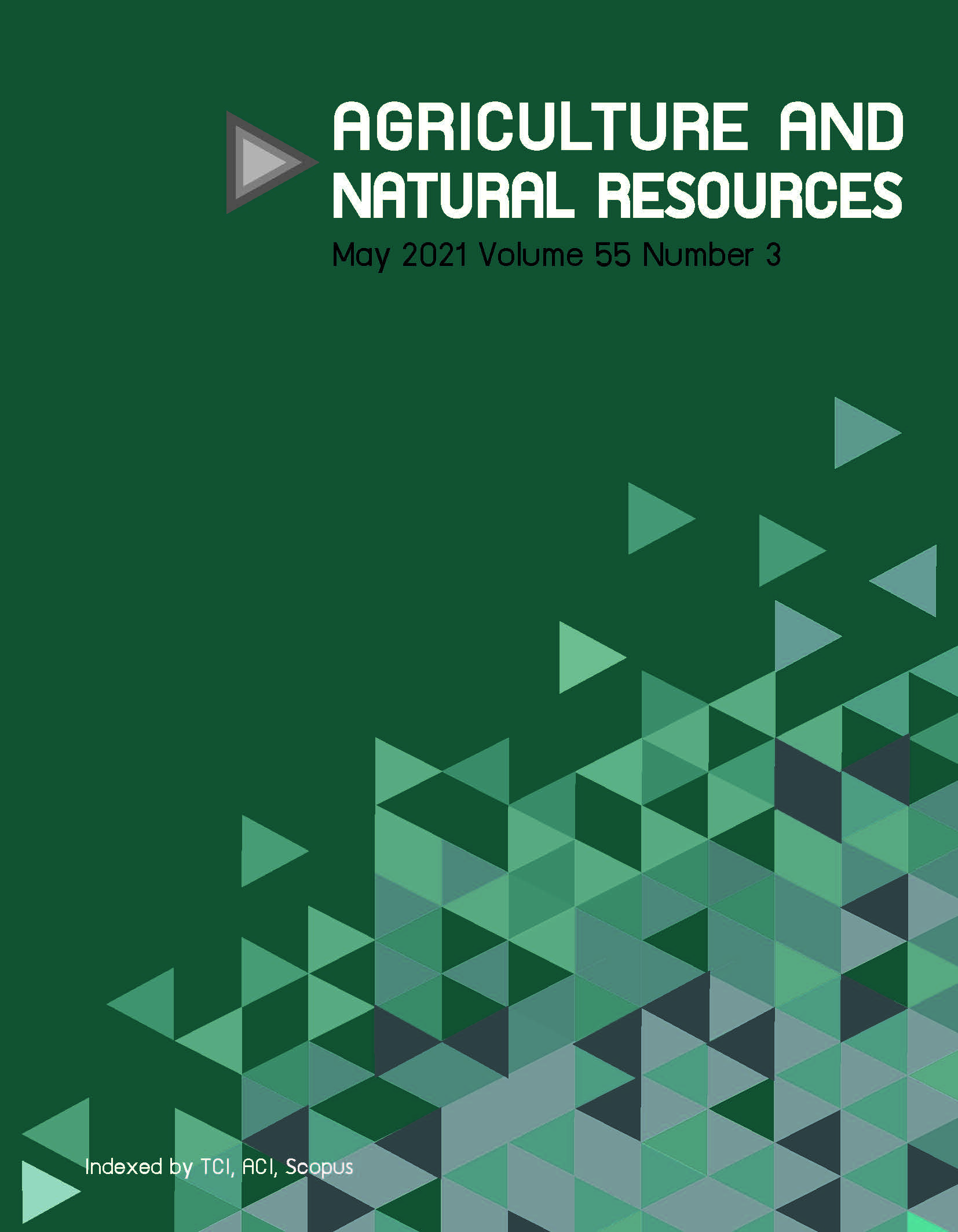Molecular detection of Mycoplasma haemofelis, ‘Candidatus Mycoplasma haemominutum’ and ‘Candidatus Mycoplasma turicensis’ of stray cats residing in Bangkok monasteries, Thailand
Keywords:
‘Candidatus Mycoplasma haemominutum’, ‘Candidatus Mycoplasma turicensis’, Mycoplasma haemofelis, Stray catsAbstract
Feline hemoplasmosis, an important disease, causes anemia and fatality in felids worldwide. It is caused by the hemotropic bacterial parasites: Mycoplasma haemofelis (Mhf), ‘Candidatus Mycoplasma haemominutum’ (CMhm) and ‘Candidatus Mycoplasma turicensis’ (CMt). In Thailand, many stray cats are frequently seen in monasteries. The current study investigated the infection rate and risk factors associated with hemoplasma infections of stray cats in Bangkok monasteries, Thailand. Polymerase chain reaction was used for detection of Mhf, CMhm and CMt in 1,488 samples from stray cats randomly collected in 50 districts of Bangkok. Risk factors associated with feline hemoplasmosis were also collected and analyzed for correlation with infection. Out of the 1,488 stray cats, 16.1% (239/1,488), 24.5% (365/1,488) and 1.6% (23/1,488) were infected with Mhf, CMhm and CMt, respectively. Mixed infections with two or three hemoplasma species were found in 3.9% (58/1,488) of cats. The risk factor analysis indicated that sex, age, external parasite infestation, environmental conditions and number of cats per monastery were significantly (p < 0.05) associated with feline hemoplasma infections. Feline hemoplasmas were found in 29.4% (129/439) of the monasteries sampled from the 50 districts. In the 29.4% of hemoplasmas-positive monasteries, CMhm (100%), Mhf (96%) and CMt (34%) were identified. The results revealed that feline hemoplasmas were commonly found among stray cats in Bangkok, suggesting the possibility of these animal being a vector for the spread of diseases among outdoor cats.
Downloads
Published
How to Cite
Issue
Section
License

This work is licensed under a Creative Commons Attribution-NonCommercial-NoDerivatives 4.0 International License.
online 2452-316X print 2468-1458/Copyright © 2022. This is an open access article under the CC BY-NC-ND license (http://creativecommons.org/licenses/by-nc-nd/4.0/),
production and hosting by Kasetsart University of Research and Development Institute on behalf of Kasetsart University.







